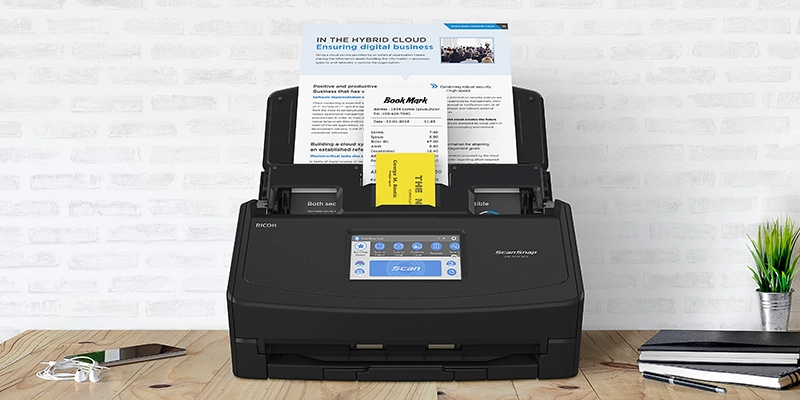Scanning medical records and digitising can bring a wealth of benefits. The average GP spends about 11% of their time completing admin tasks, including paper and document management. In an industry where every second counts, time could be better spent elsewhere.
ScanSnap’s specialist technology helps to cut down on some of the daily admin tasks and allows healthcare practices to streamline their workflows and provide better treatment to their patients.
Find out more about ScanSnap document technology today.
What are the advantages of scanning medical records?
By digitising medical records, ScanSnap frees up doctors, nurses, and other essential healthcare staff from repetitive admin tasks. This allows them to focus on improving patient care through:
Streamlining workflow processes
Scanning medical records can fast-track doctor-patient visits. Doctors can instantly access digital medical records of previous patient visits, diagnoses, and prescriptions to get a quick and clear look at the patient’s history.
Improved collaboration between different healthcare teams
Digitising medical records enables a smooth and seamless exchange of information between different departments of a practice. These data pipelines can be both on an organisational level and healthcare level.
Organisational data pipelines can involve an exchange of information between finance and HR, whereas healthcare pipelines can involve collaboration between departments such as the oncology and neurology teams, for example.
Provides more face-to-face time with patients
Digitising medical records frees up nurses and doctors from time-consuming admin tasks. They can fast-track their workflows and see more patients during their shifts, as well as have longer face-to-face interactions with these patients.
Saving on storage space and time
Scanning medical documents and organising files can help your healthcare practice maximise its office space by minimising storage needs.
It also reduces the amount of time that staff spend file hunting. In high-pressure departments like A&E, saving time can make all the difference towards saving a life.
Digitally archiving medical records can also reduce the risk of damage or loss of documents through unforeseen circumstances, such as fire or flooding.
Store files with greater security
Scanning medical records also provides greater security. For starters, it prevents medical records from getting lost or misplaced in storage units. You can also encrypt a patient’s private medical records to prevent personal information from getting into the wrong hands and breaching data protection. Healthcare practices can be sued if medical records are leaked or accessed without permission.

 ScanSnap easily integrates into the daily operations of your practice and helps you digitise your paperwork to improve patient outcomes.
ScanSnap easily integrates into the daily operations of your practice and helps you digitise your paperwork to improve patient outcomes.